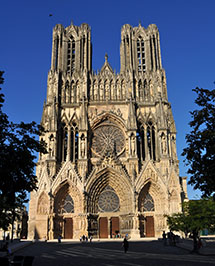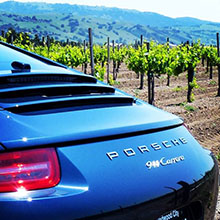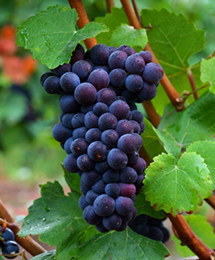|
| Pinot Noir Grapes |
| |
 |
| Reims Cathedral |
| |
|
|
| |
|
|
| |
A History of Champagne
Champagne history is divided into seven time periods. The region’s early history saw rather humble beginnings followed by centures of development that extends into the Middle Ages. The 17th century saw the dawn of sparkling wine production. Dramatic social changes and civil unrest accompanied the French Revolution in the late 18th century followed by the Napoleonic Era. Champagne saw significant changes as a result of numerous innovations during the Industrial Revolution. The early 20th century was difficult for France and especially the Champagne region. This period in Champagne history was dominated by two world wars and a worldwide depression. Post war and recent history have seen the champagne industry recover and blossom into an illustrious era for the region.
Click on one of the following links to jump to the details of a specific period in champagne history.
Early History
A bud sprouts as spring awakens the dormant vine, and so the cycle begins just like it has for centuries. The progression continues through shoot growth, flowering, fruit set, ripening and harvest, then back to dormancy and rest before beginning again. But the history of Champagne did not begin with a grape.
Early Champagne history began more than 2,000 years ago when tribal social groups settled the area. Gallic tribes inhabited the area and established cities such as the Remes who established Reims, the Tricasses who established Troyes and the Catalauni who established Chalons as early as 80 BC and before. The word ‘champagne’ is derived from the Latin word, ‘campania’ referring to the open fields and countryside of the area. Evidence of wine can be traced back to the 5th century AD. Many major battles took place in the region throughout Champagne’s early history.
Go to Early Champagne History for more details.
Sparkling Wine
Wine making eventually gave way to a new focus on sparkling wine. Prestigious houses such as Ruinart, Moet and Clicquot were established, but not without many struggles and setbacks.
Go to Sparkling Wine History for more details.
The French Revolution and Napoleonic Era
The French Revolution marks a period in Champagne history that brought about significant changes in the region’s social structure, leaving the aristocracy and monks fearing for their livelihood and their lives.
Go to Sparkling Wine History for more details.
The Industrial Revolution
Early in the 19th century the Industrial Revolution ushered in major technological advancements that are the forerunners of modern champagne production. The riddling rack or pupitre, bottle washing machine, wire cages to hold the cork in place along with advancements in the disgorgement process are only a few of the noteworthy inventions during this period in champagne’s history. Industrialization unquestionably helped the plight of the Champenois, but just when things were beginning to truly excel, new and devastating challenges came about. Near the end of the 19th century and into the 20th century the area was plagued with the onset of phylloxera bringing about the enormous loss of vines.
Go to The Industrial Revolution History for more details.
World War I and Prohibition
Soon to follow the devastation from phylloxera was the onset of World War I, the war that is referred to as ‘The Great War’, especially in France. Champagne managed to endure, but the devastation left no alternative but to begin again. Not long after World War I, the United States of America ratified prohibition, prohibiting the sale of alcohol.
Go to World War 1 History for more details.
The Great Depression and World War II
Following prohibition, the Great Depression lay ahead with disastrous economic times, leaving the world with no discretionary money to spend on wine or any other luxury product.
World War II also affected the area, but the Germans had a taste for champagne and wanted to keep their suppliers intact. While the German occupation did not advance the economy of Champagne, when the area was finally liberated in 1944 the overall destruction was significantly less than that of World War I. Champagne Houses soon began to recover.
Go to World War 2 History for more details.
Recent Champagne History
The 1950s brought significant development throughout the region. The area has faced other challenges in the second half of the 20th century including the Champenois’ own internal struggles and disagreements, but the tenaciousness of the people continues to overcome adversity and bring about innovation and expansion
Go to Recent Champagne History for more details.
Champagne History
More about Champagne's history can be found at Britannnica's Champagne. |






